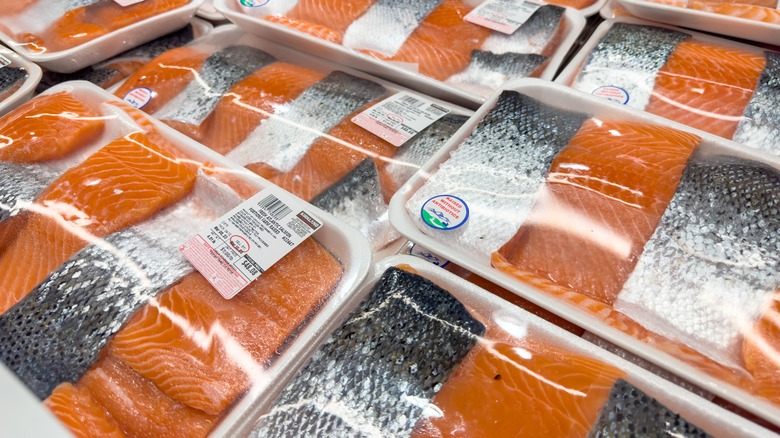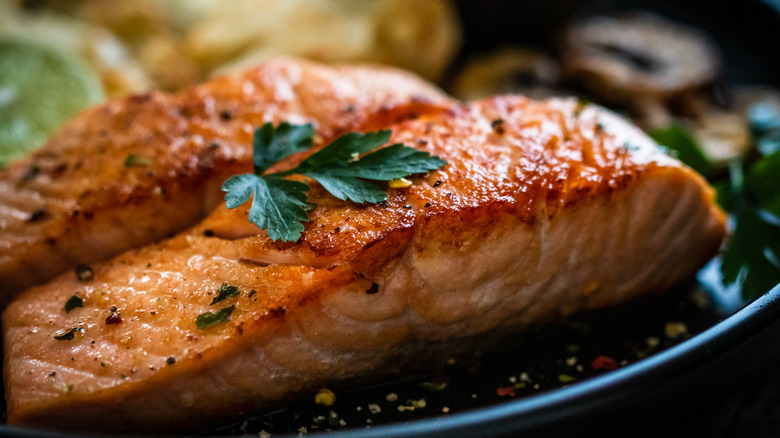The Unsettling Find You Might Encounter In Packaged Raw Fish
Worms are everywhere. But you wouldn't want to see them wriggle out of the salmon you just purchased at Whole Foods. Costco was also accused of selling wormy fish and sued for $200,000 by a Southern California family who plucked the little slitherers from their halibut. Whole Foods and Costco are getting a bum rap, though, because, as gross as it may seem, worm-infested fish is a natural occurrence.
Several types of parasitic worms infect fish in the wild. Nematodes are the most common. The herring worm (anisakis simplex), a type of nematode, mostly infects fish that populate the Northern Pacific, particularly salmon. An abundance of anisakis in fish could be a sign of a healthy marine ecosystem. But in a 2020 study shared by Global Change Biology, researchers found that the parasite had increased by 283-fold over a 50-year time period and could pose a health threat to marine life and humans.
Another nematode is the cod worm — also called the sealworm — and infects cod and other bottom dwellers like halibut, as well as grey seals. In the cod worm's case, it isn't consumed by the fish, but instead, larvae burrow into the fish's belly flap. Nematodes mostly affect saltwater fish, but freshwater fish is often infected by tapeworms. The fish consume tapeworm eggs, and if humans ingest raw or partially cooked infected fish, the eggs pass into the intestines and can grow up to a fearsome 30 feet long.
How to make sure you don't eat the worm
If you accidentally consume fish worms or larvae, you may experience the unpleasant symptoms of food poisoning, which, if untreated, could become severe. The biggest culprit in passing fish worms into humans is sushi. You're also at risk of illness by eating citrus-marinated uncooked fish, like ceviche, and cold-smoked lox.
Farmed fish seem to be mostly immune to parasitic infestation. Farmed fish is not as unhealthy as previously believed, and the nutritional benefits of eating wild-caught fish or farmed fish are nearly identical.
You may not always be aware that your fish is infected. Fortunately, fish worms can be killed by two methods. The first is to freeze the fresh fish. The FDA recommends freezing the fish at -4 degrees Fahrenheit for 7 days or at -31 degrees Fahrenheit for 15 hours, depending on the size of the fish. Sushi restaurants are required to freeze their fish before serving, and it is considered illegal if the fish has not been frozen.
The most effective method is cooking the fish by sauteing, broiling, or baking until its internal temperature reaches 140 degrees Fahrenheit (or 60 degrees Celsius). Microwaves may cook the fish unevenly, which would leave the worm larvae unharmed. Using one or both methods should get rid of any uninvited "guest" popping out of your dinner.

